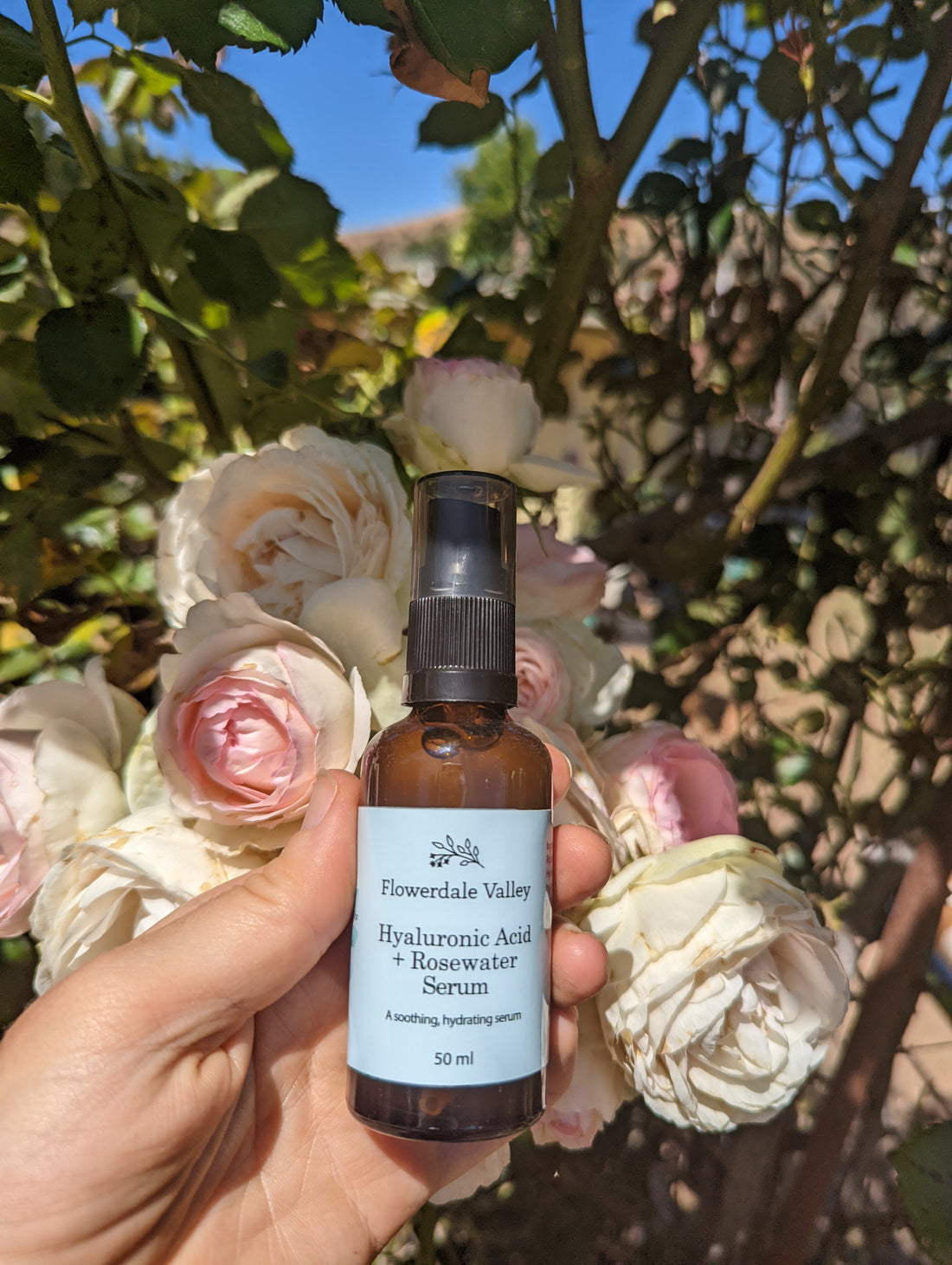
5 incredible benefits of hyaluronic acid B5 serum and how best to apply it
Share
5 Incredible Benefits of Hyaluronic Acid and How Best to Apply It
Hyaluronic acid has recently become a frequently discussed ingredient within skin care products, due to its water retention properties and its effect on elastin and collagen.
Hyaluronic acid is a carbohydrate molecule and is found naturally in our skin, however, the hyaluronic acid in our skin starts to decline as we age.
It was only in 1996 that the skincare industry began using hyaluronic acid in topical products, reasoning that because hyaluronic acid is being lost from the skin through ageing, perhaps we can add some back to the skin by applying a topical product.
Topical application cannot replace all lost hyaluronic acid, as not all of it can get down to the deeper layers of the skin, but it can help the outer layers of the skin to look and feel more plump, hydrated, dewy and soft by supporting collagen and elastin function, reducing the water loss from skin and bringing more water into the skin. Skin looks more youthful and hydrated, fine lines are less obvious and skin feels softer.
There are two ways to harvest hyaluronic acid, one is from chickens and the other is from bacterial fermentation.
The hyaluronic acid we use here at Flowerdale Valley is always made through bacterial fermentation. All our serums are made with vegan hyaluronic acid and always will be
So What Does Hyaluronic Acid Do for My Skin?
The 5 Major Benefits of Hyaluronic Acid
hyaluronic acid results in more supple and youthful skin:
Hyaluronic acid, when applied topically (as a cream or serum), rehydrates the skin and helps it retain moisture, giving it a plumper, younger appearance. It also helps it feel smoother and softer – never a bad thing!
It helps retain moisture from additional products: when you apply a moisturiser on top of hyaluronic acid, it will help your skin soak it up like a sponge and hold onto it for longer.
Hyaluronic acid can Help skin heal faster, which is especially beneficial for breakouts and acne: hyaluronic acid is also produced naturally in our skin, and is especially present when our skin is damaged. Hyaluronic acid regulates inflammation in the skin and sends signals to the body to repair the area, which helps skin have a more even skin tone, and can help damage (such as breakouts) heal much faster.
You can use it directly on pimples and acne: hyaluronic acid has antibacterial properties, so you can apply it directly to open wounds (such as a pimple) to reduce the likelihood of infection. This is particularly noteworthy since so many pimples are caused by infection in the first place.
Powerful antioxidant: hyaluronic acid is a powerful antioxidant, which helps keep your skin cells healthy and clear of free radicals – particles that can act like a bull in a china shop once inside and cause serious damage! The more antioxidants we have in our skin, the better.
Evens skin tone and reduces hyper pigmentation: hyaluronic acid, especially when paired with vitamin B5 or C, can help reduce and prevent hyperpigmentation caused by damage. Make sure you combine it with your SPF for the best protection
Who is Hyaluronic Acid Good For?
So, it sounds like hyaluronic acid is mainly beneficial to those with dry skin, or people who may be concerned about fine lines and wrinkles, but it’s also great for oily skin
Hyaluronic Acid is often marketed for dry skin, so you’d be forgiven for thinking that it’s super thick and heavy. However, its texture actually feels weightless on the skin, giving even the oiliest of skin the hydration it needs, without weighing it down, making it feel greasy, or putting you in danger of clogged pores.
And, as if that weren’t enough, hyaluronic acid also contains powerful antioxidant properties which can protect your skin from the environment, such as pollution in the air from vehicles and manufacturing. This makes it a must-have product for anyone who lives or works in the city.
What Are the Best Ingredients to Use with Hyaluronic Acid?
One particular compound that works incredibly well with Hyaluronic Acid is Panthenol, which is also known as Vitamin B5.
When used in skin care, Vitamin B5 doubles up the effects hyaluronic acid provides, by acting as a soothing, softening, and anti-irritant agent.
Unsurprisingly, the dynamic duo that is Hyaluronic Acid and Vitamin B5 has become a favourite among skin care enthusiasts. Hyaluronic Acid is often described as one of the most vital molecules involved in skin moisture, with an impressive capacity to bind and retain water molecules, helping keep skin looking healthy, full, and bright.
Vitamin B5 is also a great companion for hyaluronic acid because is such an effective healer that tattoo artists often recommend Panthenol-based creams to clients after they have received a tattoo. Between the soothing nature of Vitamin B5 and the powerful water retaining properties of Hyaluronic Acid, this combination of compounds is perfect for reducing inflammation, redness, and breakouts, while defending against signs of aging.
hyaluronic acid paired with vitamin B5 can be found in our hyaluronic and vitamin B5 serum
and our HyaMarine Glow which has the added benefit of Irish Sea Moss
How Should I Apply Hyaluronic Acid
Apply it to a clean, damp face morning and night
damp skin is best as the hyaluronic acid serum will work to retain this moisture in your skin
then you will need to add a moisturiser, balm or oil on top as hyaluronic acid is very lightweight and water based and needs to be sealed with a layer on top

1 comment